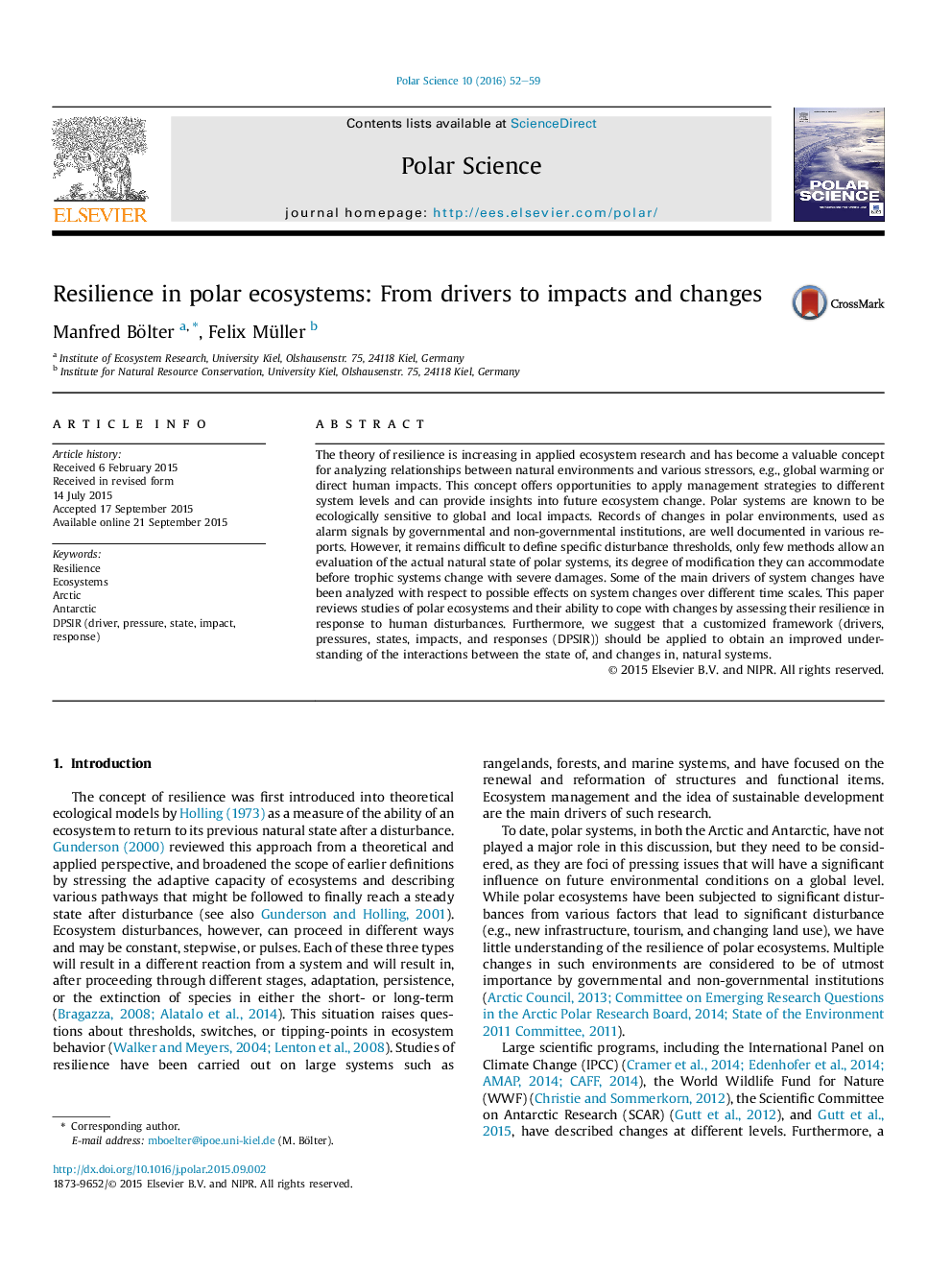| کد مقاله | کد نشریه | سال انتشار | مقاله انگلیسی | نسخه تمام متن |
|---|---|---|---|---|
| 4683189 | 1349283 | 2016 | 8 صفحه PDF | دانلود رایگان |
The theory of resilience is increasing in applied ecosystem research and has become a valuable concept for analyzing relationships between natural environments and various stressors, e.g., global warming or direct human impacts. This concept offers opportunities to apply management strategies to different system levels and can provide insights into future ecosystem change. Polar systems are known to be ecologically sensitive to global and local impacts. Records of changes in polar environments, used as alarm signals by governmental and non-governmental institutions, are well documented in various reports. However, it remains difficult to define specific disturbance thresholds, only few methods allow an evaluation of the actual natural state of polar systems, its degree of modification they can accommodate before trophic systems change with severe damages. Some of the main drivers of system changes have been analyzed with respect to possible effects on system changes over different time scales. This paper reviews studies of polar ecosystems and their ability to cope with changes by assessing their resilience in response to human disturbances. Furthermore, we suggest that a customized framework (drivers, pressures, states, impacts, and responses (DPSIR)) should be applied to obtain an improved understanding of the interactions between the state of, and changes in, natural systems.
Journal: Polar Science - Volume 10, Issue 1, March 2016, Pages 52–59
